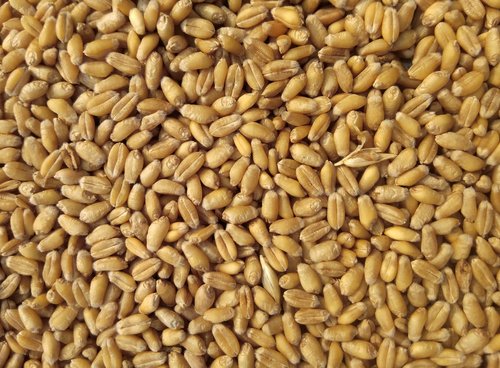Application of Biotechnological Tools to Wheat Breeding

Written by: Ellen Cottee
Lead Researcher: Dr. Ron Knox, AAFC – Swift Current
Across the wheat industry, breeders, growers and researchers alike are on the hunt for more ways to improve the crop. From increased yields to higher quality, pest and disease resistance to protein levels, there are several ways to ensure Canada’s wheat is the best it can be.
It will take all members of this chain and many solutions to create the varieties that will carry Canada’s wheat into the future, but one key component is the introduction of biotechnological tools to the process.
Dr. Ron Knox of Agriculture and Agri-Food Canada – Swift Current has been working on plant pathology and breeding efforts for much of his career. Leading his newest project, Application of Biotechnological Tools to Wheat Breeding, Knox and his team seek to accelerate and improve breeding via futuristic-sounding methods.
Part of the 2018-23 Canadian Wheat Research Cluster, the project uses marker-assisted breeding and double haploid production to assist breeders in their efforts to bring forward the best wheat yet.
“Breeders have been working at their craft for decades, so it’s getting harder and harder to make those increases in performance, yield, all those components,” Knox explained. “The application of these technologies is a tool that allows them to continue making those marginal increases.”
Marker-assisted breeding allows researchers to use established or newly developed markers to identify key traits in lines of wheat selected for crossbreeding as parents. Once these lines are confirmed to have desired traits, researchers and traditional breeders work together to plan and construct crosses around these traits and their expression in the plant.
Another component of the project’s research is in double haploid production, a process that can cut traditional breeding from five or six plant generations to one. Focusing on the female gamete of the plant, researchers stimulate egg division in a wheat plant using corn, as no genetic material from the corn carries through. Because the embryo comes from a single plant, it is genetically pure or homogenous, creating predictability for breeding.
It’s not just the time saved on breeding cycles that benefits breeders; double haploid breeding also ensures fewer recombinations, or shuffling of the genes, making it easier to predict the genes and traits the plant will exhibit.
“Our strategy is to use simple crosses of elite lines that have complementary traits,” Knox said. “Getting combinations of genes and being able to recycle that improved line back into breeding as a parent, that greatly improves the breeding efficiencies.”
This research will allow traditional breeders to create new varieties with strong economic benefits, including pest resistance, performance in the field and quality.
Looking to the future of biotechnological tools in wheat breeding, Knox believes greater understanding of the wheat genome will identify further trait markings, such as yield and stress resistance. Putting this research into breeding, however, isn’t necessarily simple.
“Those traits have a lot of interaction with the environment, so it’s that much more challenging to validate the markers – we have to sample environments, which means testing populations in multiple locations over multiple years, he explained. “That takes patience and continued support.”